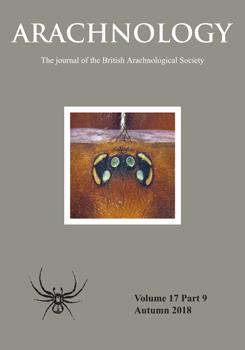The webs of hahniid spiders are poorly known. Those of Neoantistea riparia (Keyserling, 1887) all included sheets near the surface of the ground, but were more complex and variable than the simple sheets mentioned in previous accounts. Additional components included: sparse tangles of variable size above the sheet; lines below the sheet; small, dense tangles near some edges of the sheet; and a temporary feeding chamber below the sheet built near a recently captured prey. Webs were close to the surface of damp ground and, as a result, spent long periods coated with droplets of water. These droplets may aid in prey capture, as water accumulated on struggling prey and may have hindered their escape. In contrast, droplets seldom adhered to the spiders.
BioOne.org will be down briefly for maintenance on 17 December 2024 between 18:00-22:00 Pacific Time US. We apologize for any inconvenience.
How to translate text using browser tools
1 November 2018
The Webs of Neoantistea riparia (Araneae: Hahniidae): Are Dew Drops Helpful in Prey Capture?
William G. Eberhard
ACCESS THE FULL ARTICLE

Arachnology
Vol. 17 • No. 9
November 2018
Vol. 17 • No. 9
November 2018
Louisiana
sheet web
tangle web




